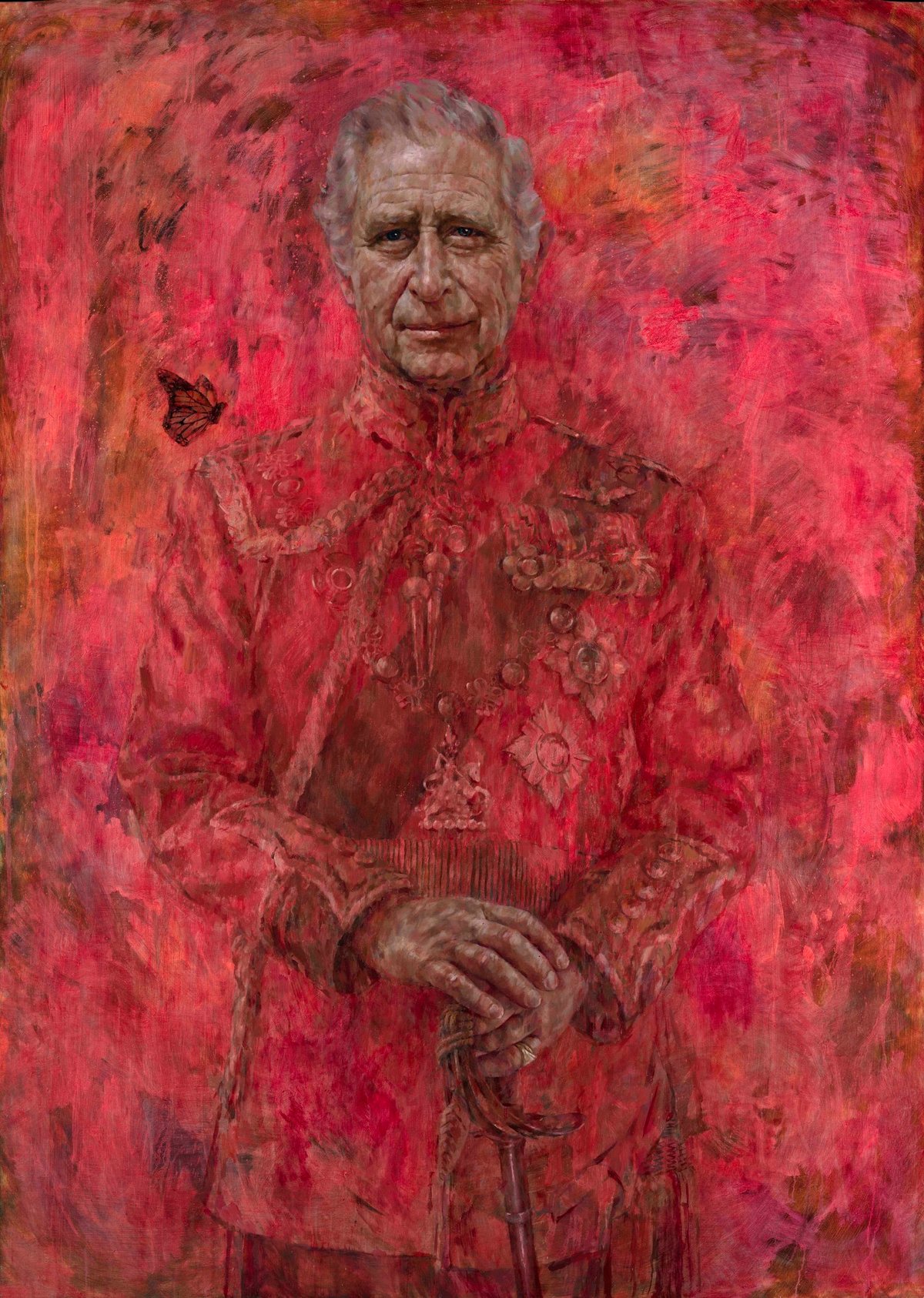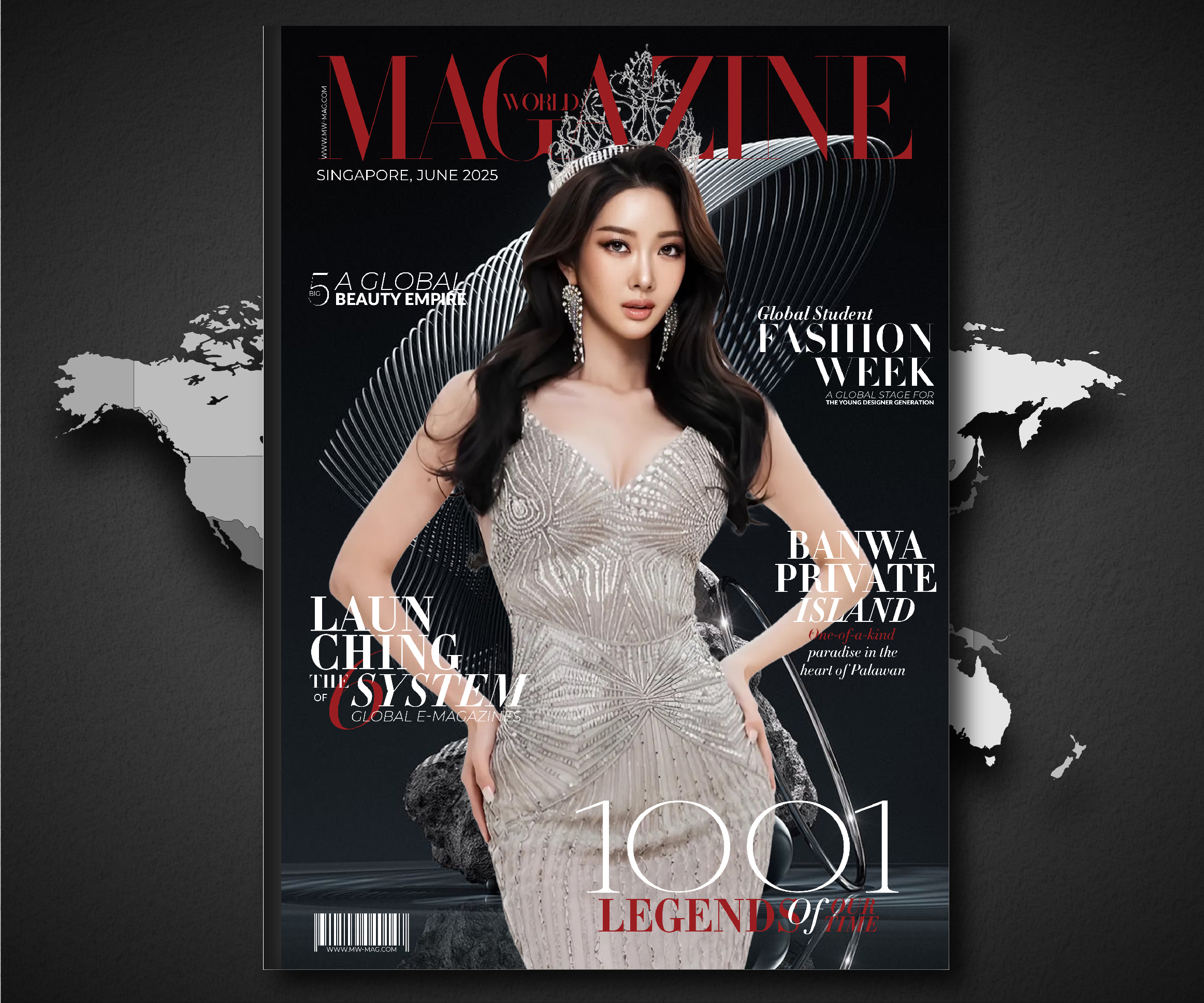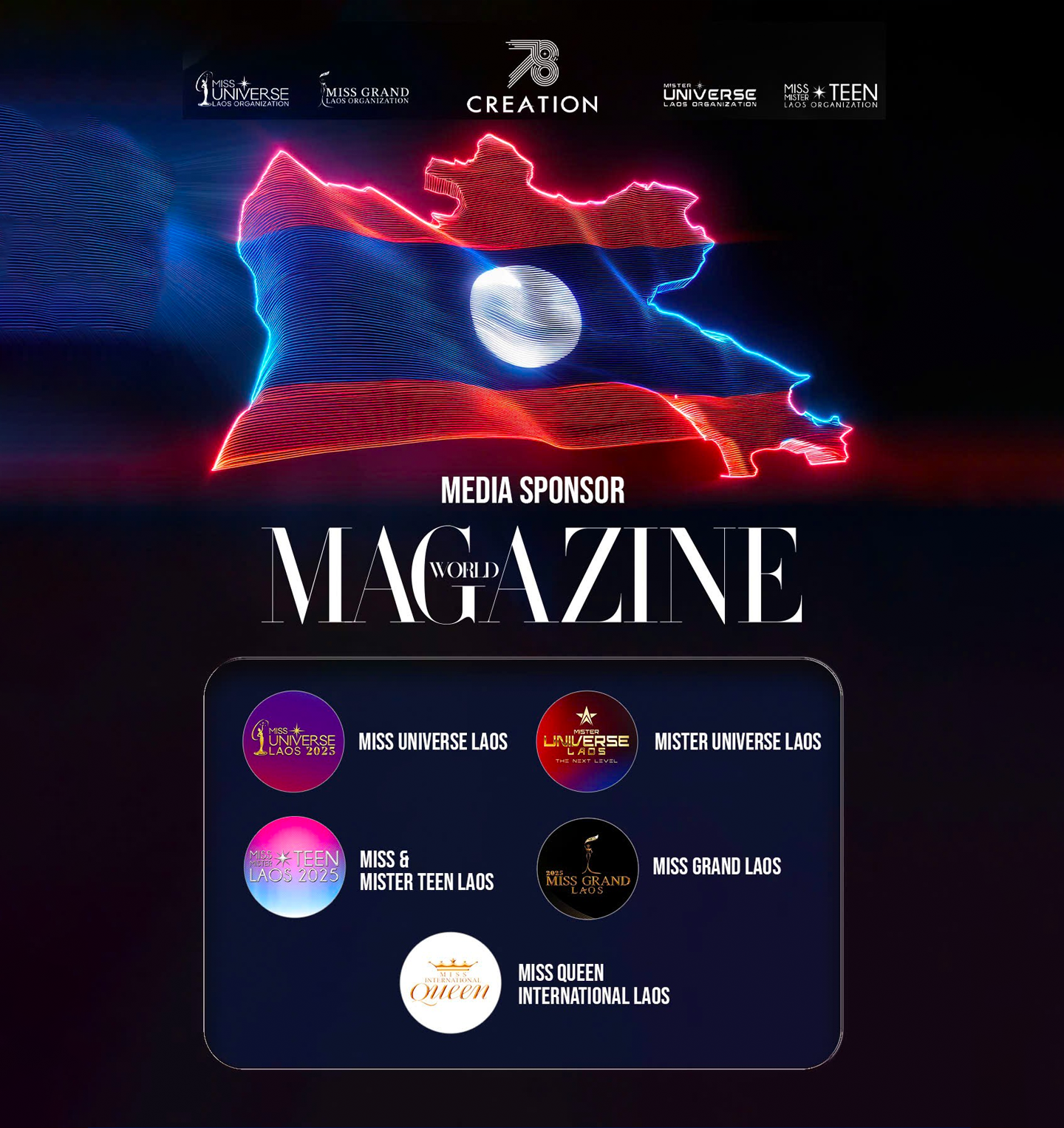The unveiling of a royal portrait is always a seismic cultural event, but rarely has one generated such instantaneous and visceral division as Jonathan Yeo’s depiction of King Charles III. Bathed in a vibrant, almost infernal scarlet, the work immediately polarized the public, some seeing a terrifyingly contemporary vision, others an invigorating jolt to a staid tradition. The King, rendered in the full uniform of the Welsh Guards, stands sentinel against a vast, monochrome field of red that seems to consume the edges of the canvas. Yet, in a gesture that grounds the majesty in personal conviction, a small, brightly colored butterfly alights gently on his shoulder. This dramatic composition—a striking contrast to the more reserved style of his late mother—announces a new era for the monarchy, one that is both profoundly contemporary and intensely personal, forcing viewers to confront the very nature of royal image-making.
A Monarch Clad in Scarlet: Uniformity and Command
The portrait of King Charles III, commissioned in celebration of his ascension, places the monarch in a pose of quiet command, yet the setting is anything but traditional. The King is depicted wearing the ceremonial uniform of the Welsh Guards, an honorary position he has held since 1975 and a clear nod to the military dignity inherent in his royal office. In his hand, he firmly grips a sword, reinforcing the image of a sovereign entrusted with the defense and duty of his kingdom.

The choice of uniform, meticulously rendered in the traditional style, provides the crucial anchor of historical continuity against the painting’s radical background. It serves as a visual reminder of the lineage and centuries of tradition that define the British monarchy. The artist, Jonathan Yeo, a celebrated portraitist known for capturing the likenesses of many prominent figures, from artists to politicians, sought to use these conventional elements—the uniform, the posture, the sword—as a foil to his bold stylistic decision. The formal attire grounds the portrait in the established vocabulary of royal portraiture, allowing the modern interpretation to feel less like a break and more like an intense evolution of the genre.
Jonathan Yeo’s Radical Palette: Echoes of the Inferno
The most striking and controversial element of the portrait is the pervasive, overwhelming use of scarlet that saturates the canvas. The King is engulfed by a dense field of red glazes that spill out from his uniform, dissolving the background into a powerful, almost abstract plane. On social media, the initial reaction was one of shock, with many commentators drawing parallels to “Dante’s Inferno,” suggesting a disturbing, fiery backdrop to the King’s reign.

Yeo, however, clarified his intention, explaining that the vivid glazes were designed to echo the bright red tunic of the Welsh Guards uniform. In his view, this intense hue accomplished a dual purpose: it resonated with the visual tradition of royal heritage, where deep reds often signify power and richness, while simultaneously injecting a “dynamic, contemporary jolt” into what can often be a stale form of painting. This deliberate use of an aggressive monochrome rejects the neutral or detailed settings common in older royal works, demanding that the viewer focus entirely on the monarch’s presence and the unsettling energy of his surroundings. By sacrificing traditional perspective and detailed background elements, the artist forces the red to become less a color and more an atmosphere—a metaphor for the intense scrutiny and passion that surrounds the Crown.
The Quiet Symbolism of the Butterfly
In sharp contrast to the aggressive red field stands a delicate detail that offers a moment of contemplative reprieve: a butterfly resting gently on the King’s shoulder. This seemingly small element was no accident; it was included at the King’s own suggestion and serves as the emotional and thematic counterpoint to the intensity of the crimson.
The butterfly is rich with symbolism, primarily referencing two central aspects of the King’s public life. Firstly, it is a clear nod to his lifelong commitment to environmentalism and ecological sustainability, causes which have defined his decades as Prince of Wales and are expected to shape his reign. Secondly, the butterfly is a classical symbol of metamorphosis and transition. Its presence marks the King’s shift from the longest-serving heir apparent in history to the reigning sovereign. It symbolizes his personal and professional transformation, a profound change in identity from the dedicated Prince to the crowned King. The contrast between the vulnerability of the small insect and the overwhelming power of the surrounding red—and the King’s powerful uniform—suggests a balance: the weight of the crown is tempered by the King’s quiet dedication to nature and his own inner life.
The Divide of the Digital Age: Shock and Adulation
The immediate, viral spread of the portrait across the internet ensured that the public debate was not contained to the traditional art world. As with all modern royal images, opinions were intensely polarized. The portrait instantly became a Rorschach test for the public’s feelings about the monarchy, modern art, and the King himself. The critical comments, exemplified by the “Dante’s Inferno” remark, highlighted a sense of unease with the radical departure from traditional portraiture, with many users feeling the dominant red was too aggressive, too shocking, or simply “dreadful.”

Conversely, a significant portion of the audience lauded the work for its artistic bravery and the striking realism of the facial features. The artist’s ability to capture the King’s likeness, despite the overwhelming color field, was noted by supporters who saw the work as dynamic and necessary. Crucially, the portrait received the most vital stamp of approval from within the family itself: Queen Camilla, upon seeing the painting, reportedly told Yeo, “Yes, you’ve got him.” This internal validation suggests that while the portrait may have failed to adhere to the public’s expectation of a serene, traditional image, it successfully captured the essence or “soul” of the man known intimately by his family, fulfilling the highest purpose of a commissioned portrait. The King himself cooperated fully, sitting for Yeo four times over the course of nearly a year, demonstrating his devotion to art and his willingness to participate in a bold, contemporary artistic venture.
A Modern King in an Ancient Genre
Jonathan Yeo’s portrait is destined to be a defining image of the early Carolean age, marking a clear break from the gentle traditionalism often associated with royal images of the past. The work positions King Charles III as a Modern Monarch, unafraid of contemporary artistic interpretation and willing to use his image to express his personal convictions—such as his environmental passion represented by the butterfly.
By embracing the provocative style, the King sanctions a new relationship between the Crown and culture. It signals a departure from the historical practice where royal portraits were often designed to project a uniform, unchallenging image of divine right or stoic continuity. Instead, this powerful, red-drenched work confronts the public, demanding a reaction and forcing a dialogue about the future of the monarchy. Like other historically polarizing works—such as Whistler’s portraits or even the Queen’s own early sittings—this painting will likely transition from a controversial curiosity to an accepted, even admired, piece of art history, defining a new, dynamic chapter for royal portraiture in the 21st century.




